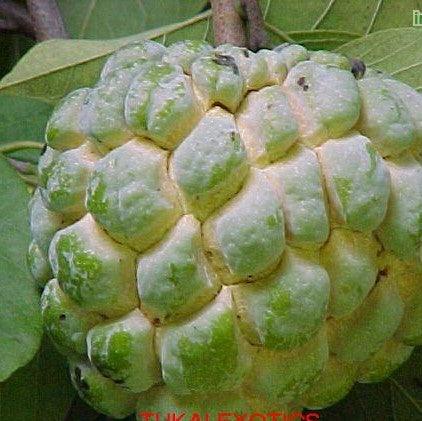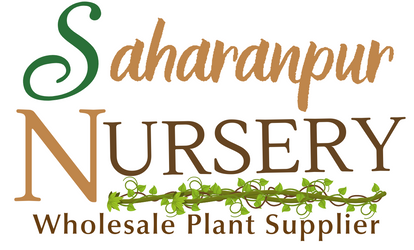
Discover the Sweet Delights of Annona Squammosa | The Nutritious and Delicious Custard Apple/Sugar Apple Plant
Original price
Rs. 99.00
-
Original price
Rs. 99.00
Original price
Rs. 99.00
Rs. 99.00
-
Rs. 99.00
Current price
Rs. 99.00
Common name: Custard Apple, Sugar Apple
Regional name: Marathi - Sita Phal, Hindi - Sita Phal, Sharifa
Category: Fruit Plants, Trees, Shrubs
Family: Annonaceae or Custard apple family
1. Introduction to Custard Apple 'Annona Squammosa'
Custard apple, scientifically known as Annona squamosa, is a tropical fruit tree belonging to the Annonaceae family. It is native to Central America, the West Indies, and northern South America. The tree produces a sweet and creamy fruit that is enjoyed for its unique flavor and numerous health benefits.
2. Plantation of Custard Apple
- Site Selection: Custard apple trees prefer a warm, tropical climate, and well-draining soil. They can tolerate partial shade but thrive in full sun.
- Propagation: Propagate custard apple trees from seeds, air layering, or grafting.
- Planting: Space the trees 15-20 feet apart in rows and 20-25 feet between rows to provide adequate space for growth.
3. Growing Conditions
- Soil: Custard apple trees grow well in loamy or sandy soils with a pH between 6.0 and 7.5.
- Water: Provide consistent moisture but avoid overwatering, as this may lead to root rot.
- Fertilizer: Apply a balanced, slow-release fertilizer every 3-4 months during the growing season.
- Pruning: Prune young trees to encourage lateral branching and maintain mature trees by removing dead or diseased branches.
4. Care for Custard Apple Trees
- Pest Control: Regularly inspect the tree for pests, such as mealybugs and fruit flies, and apply appropriate treatments if necessary.
- Disease Control: Prevent fungal diseases by providing proper air circulation and avoiding overwatering.
- Harvesting: Custard apples are ready to harvest when the skin turns from green to yellowish-green, and the fruit yields slightly to gentle pressure.
5. Health Benefits of Custard Apple
- Rich in Nutrients: Custard apples are a good source of vitamins C and B6, potassium, magnesium, and dietary fiber.
- Boosts Immune System: The high vitamin C content in custard apples helps strengthen the immune system.
- Improves Digestion: The dietary fiber in custard apples supports healthy digestion and prevents constipation.
- Heart Health: Potassium and magnesium in custard apples help regulate blood pressure and maintain a healthy heart.
- Antioxidant Properties: Custard apples contain antioxidants that protect against cellular damage and reduce the risk of chronic diseases.

